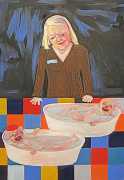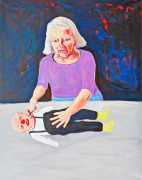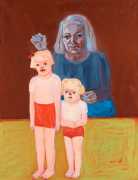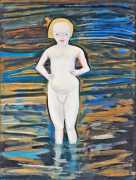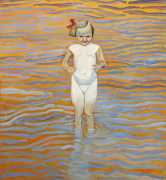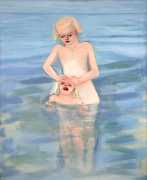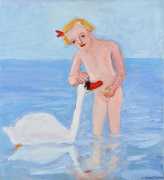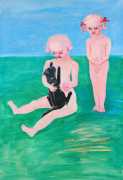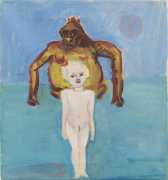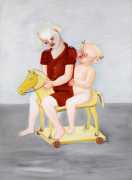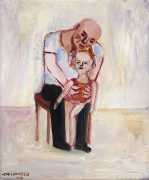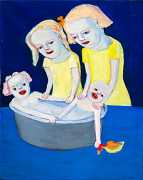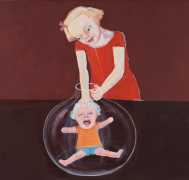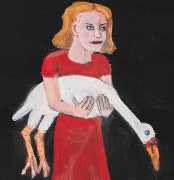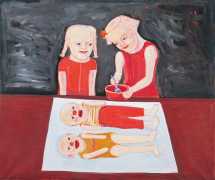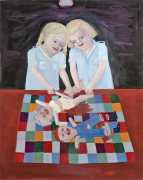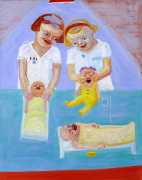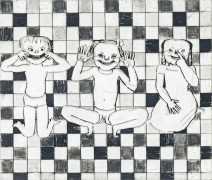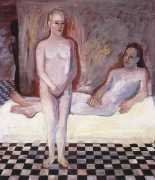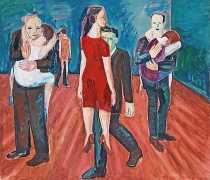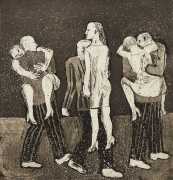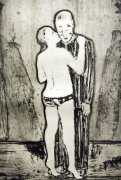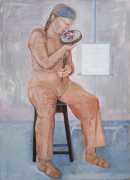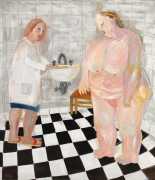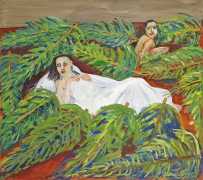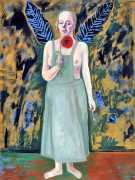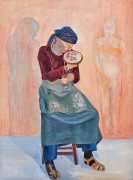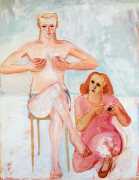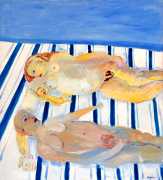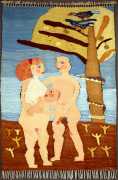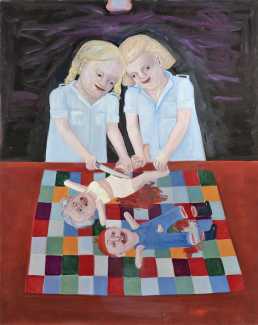
Much of Lena Cronqvist’s art is autobiographical. She draws material from her own personal experiences, transforming them into universal narratives of what it means to be human. She confronts the viewer with various existential themes, so that faced with her images we can share the difficult and ambiguous feelings of anxiety, pain and empathy that go with the ‘niceness’ of family life.
When she was eighteen, Cronqvist visited Oslo and the Munch Room in the Norwegian National Gallery. This encounter with Edvard Munch’s art made a deep impression and set her on a quest for an art that conveys the journey of life. With Munch in mind, her art can be seen in the context of a frieze of life in its depictions of the child, the young woman, the relationship between man and woman, the woman as mother, the role of the artist, illness and death.
In line with the idea of self-revelation, the self-portrait plays a central role in the art of both Munch and Cronqvist. The repeated examination of one's own face contains interpretations of the self, marked by the passage of time. Representations of mother and child are one of the core themes in her art, a relationship which is usually portrayed without closeness or warmth, often strained and on the verge of terror. The same goes for her paintings of children, mostly little girls, and the way they often appear naked reflects the rawness of Cronqvist’s themes.
Lena Cronqvist is very much a feminist artist, and her relationship-themed works such as her Tango series of 1985 reflect her observations on gender-based power relations. But is she in any way an erotic artist? If ‘erotic’ includes an honest, raw, naked exploration of human experience then she most definitely qualifies.



